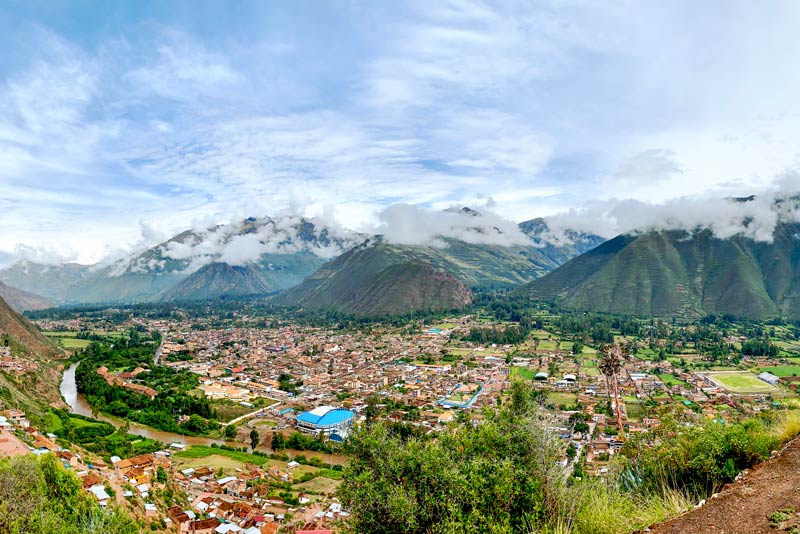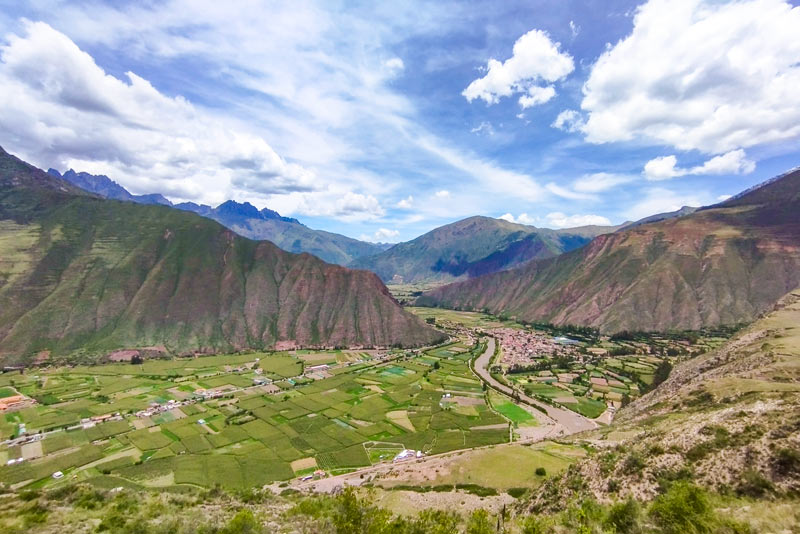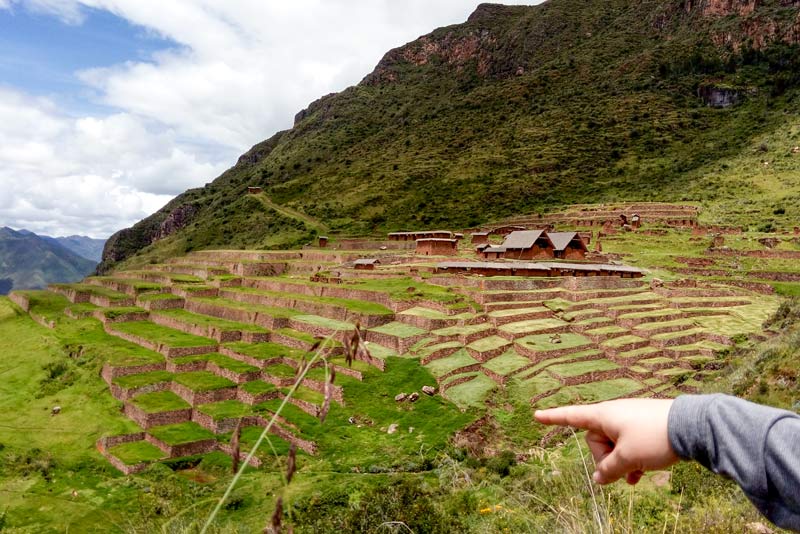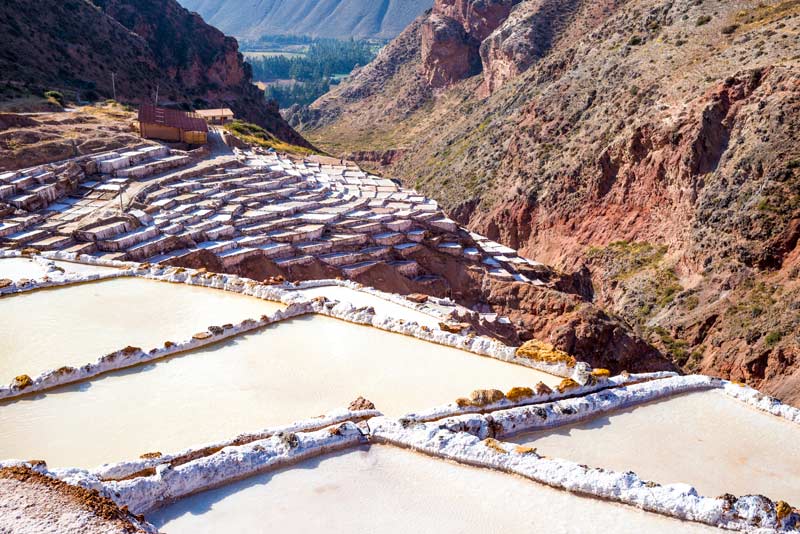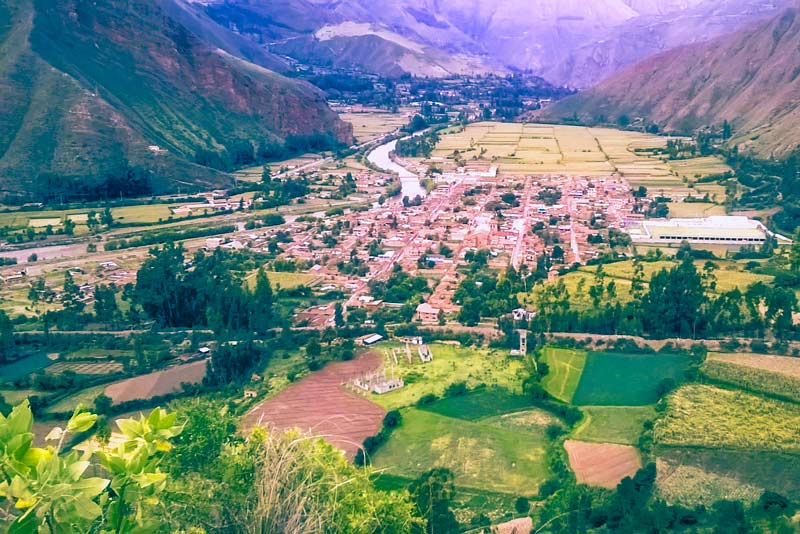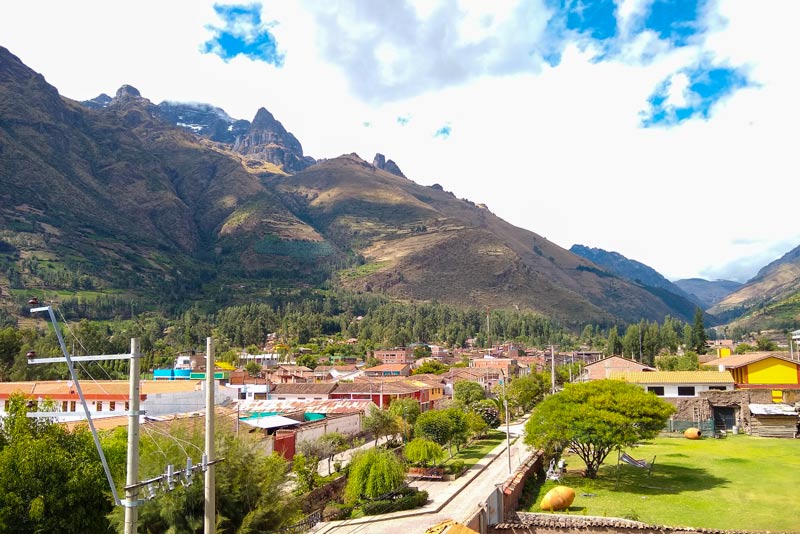Alternate Routes in the Sacred Valley of the Incas
The Sacred Valley of Cusco is one of Peru’s most culturally and naturally rich regions. Although destinations like Pisac, Ollantaytambo, and Chinchero are widely known, there are alternative routes that allow travelers to explore less-traveled areas and gain a deeper understanding of local traditions, landscapes, and culture. Discover these places that combine history, customs, and nature, ranging from traditional villages to archaeological sites and areas teeming with biodiversity.
- Yucay
- Huchuy Qosqo
- Maras – Moray
- Huayllabamba
- Calca
- Urubamba
- Traditional routes vs. alternative routes
- Tips for your trip
- Frequently asked questions
Since before the Inca Empire, the Sacred Valley has been a fundamental territory for Andean cultures. Due to its unique geography, the mighty Urubamba River, and its variety of microclimates, the region has established itself as a key center for agricultural production and ceremonial practices. Promoting alternative routes to the most visited destinations not only helps better distribute tourist flow but also reveals less-explored sites, equally rich in history, traditions, and biodiversity. This promotes sustainable tourism that contributes to the development of local populations and the preservation of their cultural and natural heritage.
Yucay
Yucay is a small town that preserves a rural, colonial atmosphere, with cobblestone streets and architecture that reflects the Spanish influence of the colonial era. This destination stands out for its peaceful atmosphere, ideal for those looking to escape mass tourism. Visitors can tour old haciendas, enjoy viewpoints overlooking the valley, and sample the local cuisine.
Architecture: The colonial houses and the main church of Yucay are examples of the fusion of Spanish architecture and local cultural techniques.
Viewpoints: Located in a privileged position, the town offers viewpoints with panoramic views that allow you to relax and enjoy disconnecting.
Gastronomy: Small restaurants and family homes offer traditional dishes, such as cuy chactado and tamal cusqueño, made with recipes passed down through generations. Yucay is positioned as an ideal destination for culinary tourism.
Huchuy Qosqo
Huchuy Qosqo , whose name means “little Cusco,” is an archaeological site and an ideal destination for lovers of hiking and stunning landscapes. The route to Huchuy Qosqo offers stunning panoramic views of the valley and visits to less-visited archaeological sites. This archaeological site stands out for its stone structures, where you can appreciate Inca construction techniques while enjoying a beautiful panorama.
Hiking: The trek to Huchuy Qosqo is somewhat challenging, but offers unique landscapes and views ranging from agricultural terraces to imposing mountains. The hike allows you to observe the region’s endemic flora and fauna up close.
Historical Significance: Huchuy Qosqo was a key center of the Inca Empire, located in a strategic area for controlling the Sacred Valley. Ceremonial buildings and food storage facilities were built here, demonstrating how the Incas organized their territory and resources. It was also connected to the Inca road network, confirming its vital role in the empire’s expansion and communication.
Cultural Experiences: Along the route, visitors can observe and interact with local communities who offer information about their traditions and customs, strengthening the connection between visitors and the ancestral history of the area.
Maras – Moray
The combined tour of Moray and Maras is a must for those interested in stunning landscapes steeped in the history of Inca agriculture and natural resources.
- Moray: It is famous for its circular agricultural terraces, which are believed to have functioned as a kind of laboratory for experimenting with different microclimates in its food.
- Maras: This small town is home to salt mines, a complex of natural pools where salt has been extracted traditionally since pre-Columbian times. The site forms a unique landscape, showcasing the integration of ancestral practices with the natural environment. Furthermore, conservation initiatives have helped preserve this cultural and ecological heritage.
Huayllabamba
Huayllabamba is a small but charming town that offers a serene atmosphere and a unique opportunity to experience Andean traditions firsthand.
Colonial Church: The church, with its typical Andean-colonial architecture, is the spiritual heart of the town. Located in the central plaza, it is a meeting point for cultural events and traditional festivities. The plaza is also ideal for enjoying the relaxed atmosphere, observing daily life, and sampling snacks at small local stalls.
Local Market: Huayllabamba’s markets offer fresh produce and handmade crafts. Here, visitors can purchase textiles, ceramics, and other products made by local artisans, allowing them to take home a piece of their tradition.
Lookouts and hikes: The surrounding area features trails that lead to natural lookouts with panoramic views of the valley and surrounding mountains. These trails not only offer exercise and adventure, but also allow you to appreciate the beauty of the agricultural landscape.
Calca
Calca is a town that, although not as well-known as other destinations in the Sacred Valley, offers a combination of history, nature, and authentic local life. Located in the upper part of the valley, Calca is the starting point for exploring rural areas, traditional markets, and hiking trails in less tourist-friendly landscapes.
History: Calca bears vestiges from the pre-Hispanic and colonial eras, reflected in its buildings and the organization of its festivals. Historical accounts indicate that Calca was an important center for trade during the Inca period.
Local Culture: The Calca community is characterized by its dedication to artisanal production and agriculture. Visitors can learn about the process of making textiles and other indigenous products firsthand.
Gastronomy: Calca’s typical dishes, made with local ingredients such as quinoa and native potatoes, reflect a cuisine that respects Andean heritage. The selection of organic products and farmers’ markets also contribute to a genuine visitor experience.
Connection with Nature: Calca’s location allows for hiking trails that cross farmland and natural areas, providing a direct connection to rural life. This natural setting is ideal for those seeking a break from routine and close contact with the land.
Urubamba
Urubamba is known as the “capital” of the Sacred Valley, and on this alternative route it is recommended to explore lesser-known aspects of the city. Beyond its conventional commercial and tourist facet, Urubamba offers local markets, traditional festivals and commercial premises focused on a more organic immersion with the environment.
Visiting Urubamba in an alternative context invites the traveller to learn about the daily life of its inhabitants, participate in community activities and appreciate the fusion between tradition and contemporary influences. This approach allows the visitor to discover the city from a different perspective, one that values cultural exchange and sustainability.
Markets: In Urubamba you can find local markets selling local products, a wide range of flora and crafts. These spaces offer an authentic view of life in the valley.
Gastronomy: The city has seen the emergence of innovative gastronomic proposals that fuse traditional techniques with contemporary trends, allowing visitors to taste unique flavors.
Sustainable Projects: Urubamba has positioned itself in recent years as an example of how tourism can be integrated into the local economy through collaborative projects that involve the community and promote sustainable practices.
Embark on an unforgettable experience with our full-day tour of Boletomachu Picchu through the Sacred Valley! Discover the essence of an ancient land at every step, where the landscapes, ancient archaeological sites, and the warmth of its communities await you to share their cultural heritage. With a carefully planned tour, you’ll have the opportunity to immerse yourself in the magic of the region, enjoy panoramic views, and savor authentic Andean traditions. Come and experience a day filled with history, nature, and excitement, specially designed to connect you directly and personally with the heart of the Sacred Valley. We look forward to seeing you!
Traditional routes vs. alternative routes
| Feature | Traditional Routes | Altered Routes |
|---|---|---|
| Crowding of visitors | High concentration in emblematic destinations (Pisac, Ollantaytambo, Chinchero). | Less crowded, calm and personalized atmosphere. |
| Interaction with the community | Guided tours and limited contact with local life. | Direct and authentic interaction, participation in community activities and workshops. |
| Access to nature and culture | Historical sites that are heavily visited, in some cases preventing you from having a fully immersive experience. | Lesser-known places with living traditions and almost virgin landscapes. |
| Tourist experience | Established and predefined itineraries. | Flexible tours with local activities and immersive experiences. |
| Economic impact | Benefits concentrated in popular destinations. | More equitable distribution of income, promoting the development of local communities. |
| Sustainability | Risk of saturation and deterioration of cultural and natural heritage. | It promotes responsible tourism, environmental conservation, and heritage preservation. |
Tips for your trip
Taking a tour of the Sacred Valley on these alternate routes requires proper planning. Below, we offer some recommendations to help you enjoy your trip in the best possible way:
- Preparation is essential, so bring warm clothing for the altitude and variable climate of the Sacred Valley. We recommend comfortable hiking shoes, sun protection, plenty of water and some snacks for long hikes.
- Many of these destinations require travel by vehicle, combined with some walking. We suggest you hire our tour and guide service, as we can provide you with safety and comfort along with historical and cultural information about each place.
- The key to alternative tourism is respect and collaboration with local communities. We encourage you to participate in local activities and purchase local products, which directly contributes to the development of the region. Maintaining a respectful attitude and being open to learning about customs and traditions is essential to enriching the experience.
- Choosing community-run accommodation is one way to promote sustainable tourism. Trying local cuisine in traditional restaurants or rural markets also allows you to appreciate the culinary diversity of the Sacred Valley.
- When traveling off-the-beaten-track, it is essential to adopt responsible tourism practices. This includes taking your trash with you, respecting protected areas, and avoiding overuse of natural resources.
Frequently asked questions
1) What are the alternate routes in the Sacred Valley?
Alternative routes are tourist itineraries that stray from the traditional circuits (such as Pisac, Ollantaytambo or Chinchero) and allow you to explore less-traveled destinations. These routes offer more authentic experiences and direct contact with local culture and traditions.
2) Where are these alternative routes located?
They are found in different parts of the Sacred Valley, such as Yucay, Huchuy Qosqo, Moray, Maras, Calca and Urubamba.
3) What is the best time to visit the Sacred Valley?
The dry season is the best time, running from May to September, and is the most recommended, as it offers ideal weather conditions for outdoor activities and hiking.
4) What activities can I do in the Sacred Valley?
You can visit archaeological sites, go hiking, visit markets, craft workshops, taste local food, and learn about the culture of local communities.
5) Are the routes through the Sacred Valley safe?
Yes, they have all the measures in place to make it a safe destination, but we also recommend taking precautions such as wearing appropriate clothing, drinking water, and following the signs.
6) How long does it take to travel these routes?
Depending on the route you choose, there are half-day or full-day options, depending on your interests and planned itinerary.
7) Why choose these routes instead of the traditional ones?
Because they allow for more direct contact with the local culture, fewer crowds of visitors, and the opportunity to discover authentic places.
8) Can I travel to the Sacred Valley with my family?
Yes, all alternative routes are suitable for family groups. However, it is important to choose routes that are suitable for the physical abilities of all members, especially children.
Advice from people who have been there
 By: Luis Z.
By: Luis Z.“Hike through Huchuy Qosqo“
“As a visitor to Huchuy Qosqo, I can say that this place connects you in a very special way with Andean history and culture. The experience was unique: walking among ruins that still preserve the Inca essence made me feel as if I were stepping back in time, in a mountainous and quiet environment that contrasts with the most crowded tourist sites. The authenticity of the place, the warmth of the local community and the peace you breathe make every step worthwhile.“
By Ticket Machu Picchu – Last updated, March 12, 2025
